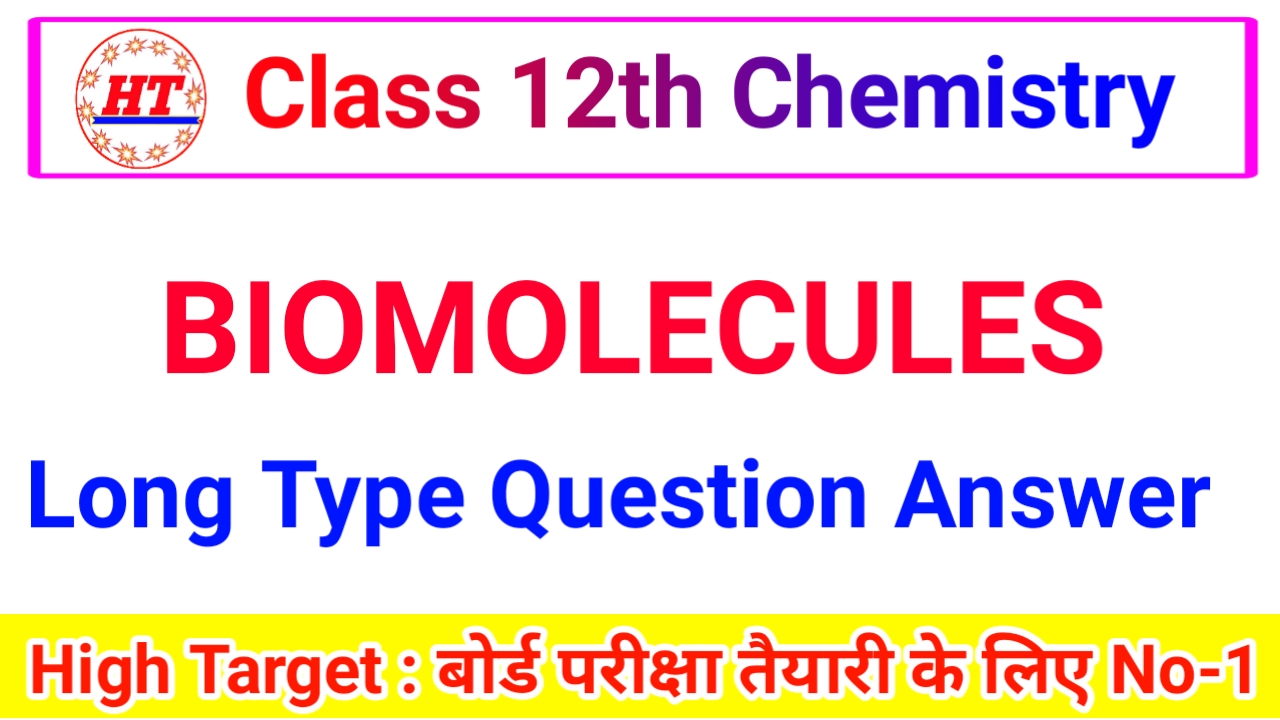3. ELECTROCHEMISTRY
Q. 1. How much charge is required for the reduction of 1 mole of Cu2+ to Cu ?
Ans. The electrode reaction is Cu2+ + 2e- → Cu
∴ Quantityof charge required for reduction of 1 mode of Cu2+ = 2F = 2 x 96500 = 193000 C.
Q. 2. What is meant by “limiting molar conductivity” ?
Ans. Liñiting molar conductivity : The molar conductivity of a solution at infinte dilution is called limiting molar conductivity and is represented by the
symbol ∧m0.
Q. 3. Rusting fo iron is quicker in saline water than in ordinary water. Why is it so ?
Ans. In saline water. NaCl helps water to dissociate into H+ and OH–. Greater the number of H+, ions quicker will be rusting.
Q. 4. Define specific conductance (conductivity).
Ans. Specific conductance is defined as conductance of electrolytes.
Q 5. Name the factors which affect electrical conductivity of electrolytes,
Ans. (i) Nature of electrolyte, (ii) Concentration of ions in solution. (iii) Temperature.
Q. 6. What is standard hydrogen electrode ?
Ans. It is the reference electrode, in which hydrogen gas at 1 bar pressure is passed in to 1 M HCl at 298 K in which a foil of platinum coated with platinum black remains immersed.
Q. 7. Specify oxidation numbers of the metals in the following co-ordination compounds :
(a) K4[Fe(CN6)] (b) [PtCl4]2
Ans. (a) [+ 1 × 4 + x + (- 1) × 6] = 0
⇒ [+ 4 + x – 6) = 0
∴ x = 6 – 4 = + 2
(b) (x +(-1)× 4] = -2
⇒ x – 4 = -2
⇒ x = -2 + 4
∴ x = +2
Q. 8. Why Al cannot be obtained by electrolysis of fused AlCl3 ?
Ans. It is a covalent compound and sublimes at 453 K.
Q. 9. What is the use of platinum foil in the hydrogen electode ?
Ans. H2 gas is non-conductor. Therofore platinum foil is used for infolw and outflow of electons.
Q. 10. How does concentration of sulphuric acid change in lead stronge battery when current is drawn form it ?
Ans. Concentratin of sulphuric acid decreases.
Q. 11. Why does a mercury cell give a constant voltage throughout its life ?
Ans. This is because the electrolytic KOH is not consumed in the reaction.
Q. 12. What are the units of cell constant ?
Ans. Cell constant is l/a cm-1 or meter-1
Q. 13. What are the products of electrolysis of (i) molten sodium chloride and (ii) aqueous NaCl ?
Ans. (i) Na and Cl2, (ii) H2 and Cl2
Q. 14. Following two reactions can occur at cathode in the electrolysis of aqueous sodium chloride
Na+ + e → Na (s), E॰red = -2.71 V
2H2O (l) + 2 e → H2(g)+2O H (aq),
E॰red = – 0.83 V
Q 15. Which reaction takes place preferentially and why ?
Ans. As the standard reduction potential of H2O is greater than that of Na+ ions, reduction of water takes place preferentially, i.e., H2 is liberated at cathode.
Q. 16. Copper is conducting as such while copper sulphate is conducting only in molten state or in aqueous solution. Explain.
Ans. Copper, being a metallic solid, is conducting due to mobile electrons. CuSO4 is conducting in molten or aqueous state due to mobile ions which it relases.
Q. 17. Why is it necessary to use salt bridge ?
Ans. To complete the electrical circuit internally and to maintain electrical neutrality of the solutions in two half cells.
Q.18. Why a cell stops working after sometime?
Ans. With time, concentration of the electrolytic solutions changes. Hence their electode potentials change. When the electrode potentials of the two half cells become equal, the cell stops working.
Q. 19. State the factors that influence the value of cell potential of the cell. Mg (s) (Mg2+ || Ag+ | Ag.
Ans. Concentration of Mg2+ ions and Ag+ ions in the solution and temperature.
Q. 20. Why is the equilibrium constant K related to only E॰cell and not Ecell?
Ans. It is because at equilibrium, E॰cell = 0
Q. 21. Write the name of the electrolyte used in (i) fuel cell, (ii) mercury cell.
Ans. (i) Concentrated aqueous KOH solution. (ii) Moist mercuric oxide (HgO) mixed with KOH.
Q. 22. Write the names of electrodes used in a fuel cell.
Ans. Hydrogen electrode and oxygen electrode.
Q. 23. Which type of metal can be used in cathodic protection of iron against rusting ?
Ans. A metal which is more electropositive than iron such as Al, Mg, Zn.
Q. 24. What would happen if the protective tin coating over an iron bucket is broken in some places ?
Ans. In such a case, iron corrodes faster than it does in the absence of tin as oxidation potential of Fe is greater than that of tin.
Q. 25. Which type of cells are rechargeable ?
Ans. Those cells rechargeable in which the products formed during discharge are deposited on the electrodes and these can be decomposed to give the original substances when electrical energy from an external source is supplied.
Q. 26. What is the role of zinc chloride (ZnCl2) in a dry cell ?
Ans. ZnCl2 combines with NH3 released from NH4 CI present in the cell to form the complex salt (Zn (NH3)2 Cl2]. Otherwise the pressure developed due to released NH3 would crack the seal of the cell.
Q. 27. Why electrolysis of NaBr and NaI gives Br2 and I2 respectively while that of NaF give O2 instead of F2 ?
Ans. Brand I-ions have higher oxidation potentials than water. Hence they are more easily oxidized. Buf F ions have lower oxidation potential than H2O. So it is H2O which is easily oxidized to give O2.




